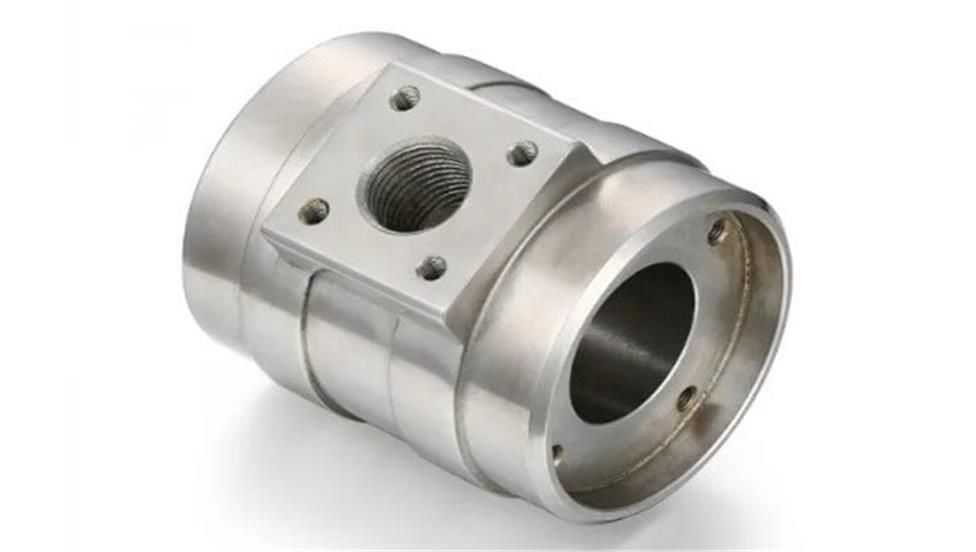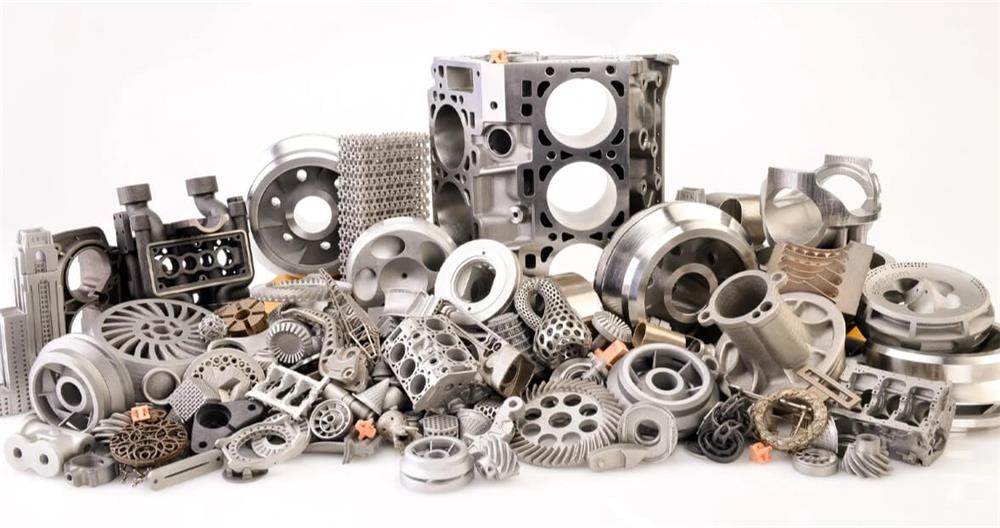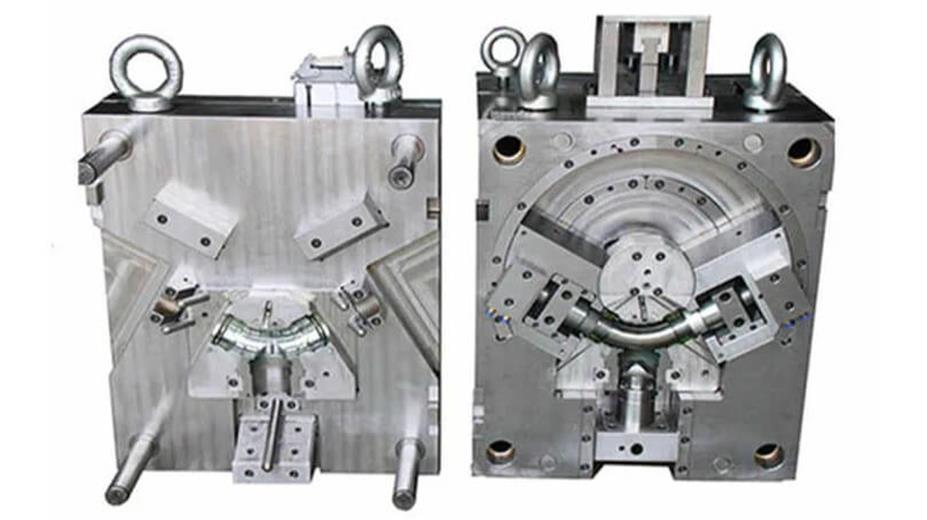How to remove rust from stainless steel? The 15 simplest methods
Although stainless steel is strong and durable, it may still have rust problems under certain conditions.
So how to remove rust from stainless steel? Knowing the correct way to remove rust can not only restore the beauty of the item, but also effectively extend its service life. This article will give you a detailed introduction on how to remove rust from stainless steel, and provide 15 methods and techniques for removing rust.
1.Understand the reasons why stainless steel rusts
Before discussing the question of “how to remove rust from stainless steel”, we first need to understand the reasons why stainless steel rusts. The reason why stainless steel is not easy to rust is that it contains metal elements such as iron, chromium, and nickel, which form a dense passive protective film on the surface of stainless steel. However, when this protective film is damaged, stainless steel will begin to rust. Common reasons include:
(1) Mechanical damage:
Using hard tools to scratch the surface of stainless steel destroys the protective film.
(2) Chemical corrosion:
Prolonged contact with acidic or alkaline substances causes the protective film to dissolve.
(3) Environmental factors:
High humidity, high salt content in the air or long-term exposure to a heavily polluted environment will also accelerate the rusting of stainless steel.
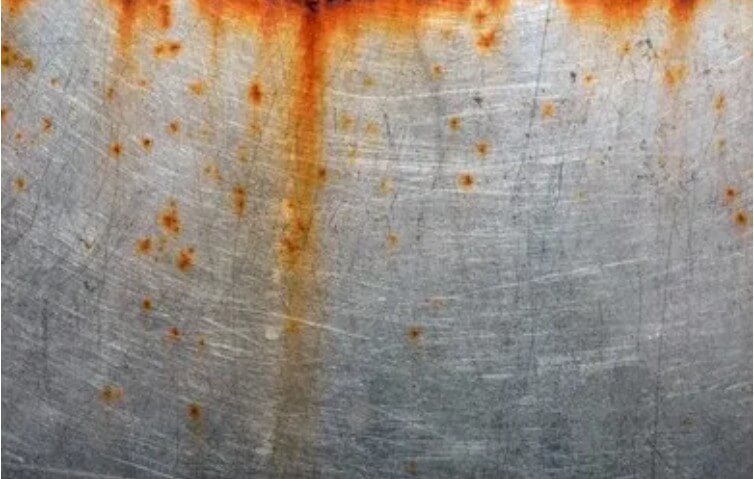
2.How to remove rust from stainless steel – physical removal
Physical methods are the most direct and environmentally friendly way to remove rust, and are suitable for situations where the rust is relatively light.
(1) Wiping with steel wool or sandpaper
Steel wool and sandpaper are common cleaning tools in the home, and have a good effect on removing loose oxide scale and rust on the surface.
When using, gently wipe the rusted area to avoid excessive force to damage the stainless steel surface. After wiping, rinse with clean water and then wipe dry with a soft cloth.
(2) Spray rust removal
Spray rust removal is to use a high-power motor to drive the spray blade to rotate at high speed, so that abrasives such as steel sand and steel shot are sprayed on the stainless steel surface under the action of centrifugal force.
This method is suitable for large-scale, stubborn rust, but protective equipment needs to be worn during operation to prevent splashing abrasives from injuring the eyes and skin.
(3) Use special cleaning tools for stainless steel
There are brushes or cleaning balls specially used for cleaning stainless steel on the market. You can use detergent to gently wipe off the rust.
This method is suitable for daily cleaning and maintenance and can effectively remove surface rust.
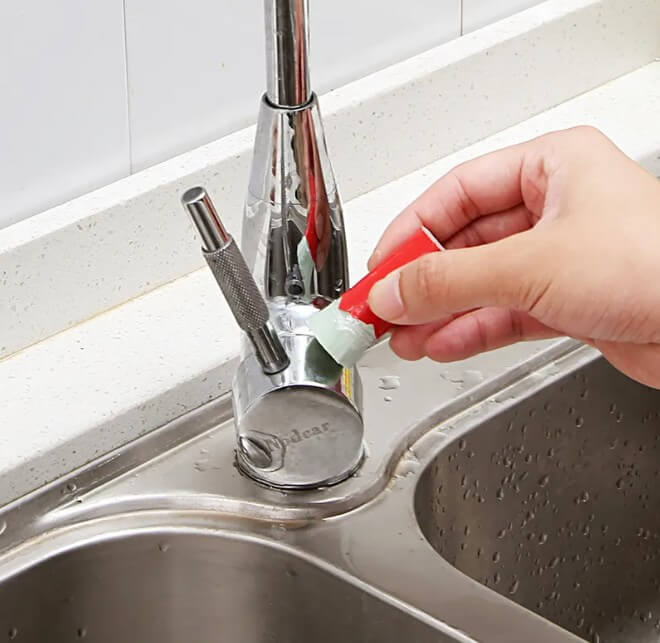
(4) Wire drawing
For the surface of wire drawing stainless steel, if rust appears, you can use a wire drawing ball to manually re-draw the rusted area.
This method can restore the original wire drawing effect of stainless steel and remove rust at the same time.
3.How to remove rust from stainless steel – chemical removal
Chemical methods use acidic or alkaline solvents to react chemically with rust to achieve the purpose of rust removal.
(1) Rust removal with acidic solvents
1) Acetic acid solution:
Acetic acid is a mild acidic solvent suitable for removing light rust. Apply acetic acid solution to the rusted area, let it stand for a while, wipe it with a soft cloth, and finally rinse it with clean water.
2) Citric acid solution:
Citric acid is also mildly acidic and can effectively remove rust from stainless steel. Slice a lemon and use it to wipe the rusted area, or dilute the lemon juice and apply it to the rust. Let it sit for a while before washing.
3) Oxalic acid solution:
Oxalic acid is a strong acidic solvent that can quickly dissolve rust. However, oxalic acid is corrosive, so you need to wear gloves when using it and ensure good ventilation. Apply the oxalic acid solution to the rusted area, let it sit for a few minutes, wipe it with a soft cloth, and finally rinse it thoroughly with clean water.
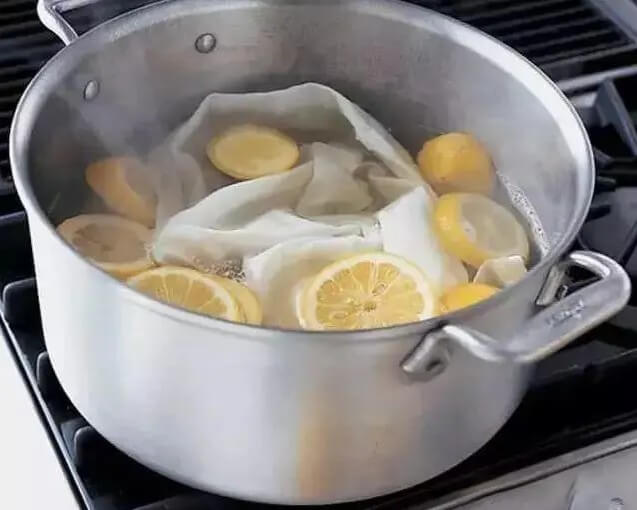
(2) Rust removal with alkaline solvents
1) Baking soda solution:
Baking soda (sodium bicarbonate) is a weak alkaline substance that can react with rust to produce ferric hydroxide that is easily soluble in water. Mix baking soda and water into a paste, apply it to the rust, let it sit for a while, wipe it with a soft cloth, and finally rinse it with clean water.
2) Concentrated soda water:
Concentrated soda water also has a certain rust removal effect. Apply concentrated soda water to the rusted area, let it sit for a few minutes, wipe it with a soft cloth, and finally rinse it with clean water.
4.How to remove rust from stainless steel – special cleaning agent removal
(1) Special cleaning agent for stainless steel
There are many cleaning agents specifically for stainless steel on the market. These cleaning agents usually have special formulas and ingredients that can more effectively remove rust and protect the gloss of the stainless steel surface. When using, make sure to follow the product instructions.
(2) Rust removal with molten steel
Low-melt steel is a powerful cleaning agent that can quickly remove rust from the surface of stainless steel. When using, first wet the rusted area with clean water, and then use a cotton swab or cotton cloth dipped in a little molten steel to wipe the rusted area. After wiping the molten steel, it should be rinsed with clean water within 10 seconds and wiped dry with a cloth to prevent the product from changing color.
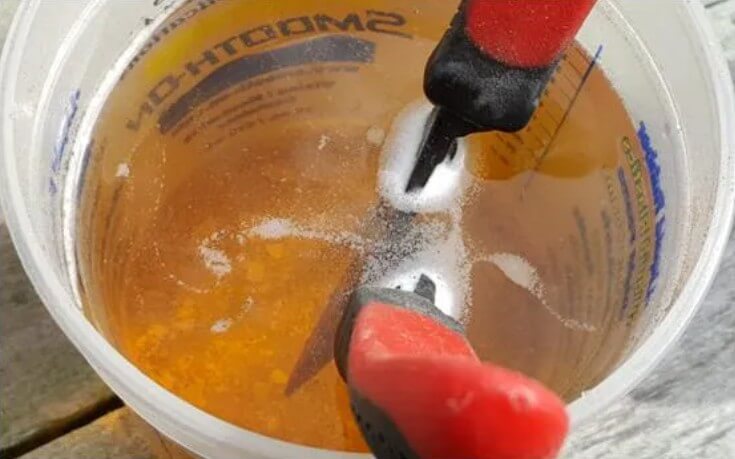
5.How to remove rust from stainless steel – other practical rust removal methods
In addition to the above methods, there are some practical rust removal tips that can help you easily remove rust from stainless steel.
(1) Rust removal with toothpaste
Toothpaste contains abrasives that can effectively remove minor rust on the surface of stainless steel. Apply toothpaste to the rusted area, gently wipe with a soft cloth or an old toothbrush, and then rinse with clean water.
(2) Rust removal with rice water
Rice water has a certain decontamination ability and can be used to remove minor rust on stainless steel. Soak the stainless steel item in rice water for 2-3 hours, then heat the rice water and wipe it, and finally rinse it with clean water.
(3) Rust removal with potatoes
The starch and acidic substances contained in potatoes can help remove rust. Cut the potato in half, cover the cut with dishwashing detergent, and then place the potato on the metal and let it sit for several hours. The potato reacts chemically with the rust layer, making it easier to remove.
(4) Rust removal with incense ash or wood ash
Incense ash and wood ash have a certain adsorption and alkalinity, and can be used to remove rust on stainless steel. Sprinkle incense ash or wood ash on the rusted area, wipe it with a dry cloth, and then rinse it with clean water.
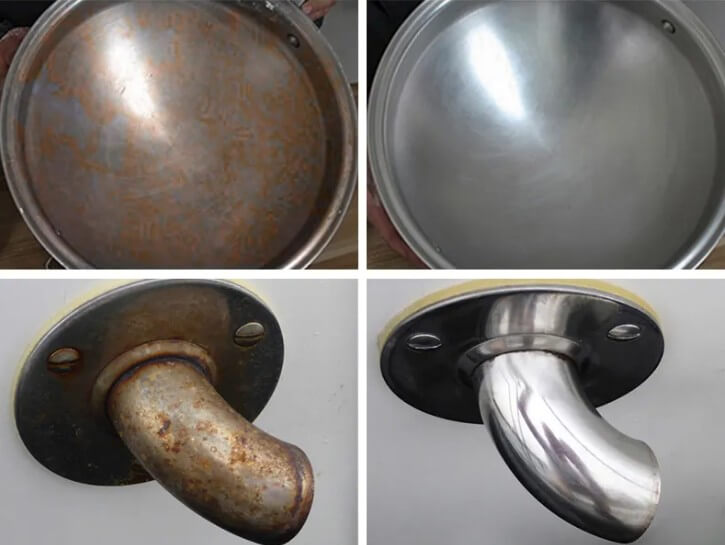
6.Stainless steel anti-rust strategies in different scenarios:
(1) Home environment
1) Regular cleaning:
Use a neutral detergent and a soft cloth to wipe the stainless steel surface regularly to remove dirt and grease and keep the surface dry.
2) Avoid chloride contamination:
Be careful not to let chlorine-containing detergents or seawater contact the stainless steel surface for a long time.
3) Surface passivation:
Regularly passivate stainless steel utensils, using passivators such as nitric acid or oxalic acid to form a protective film on the surface.
4) Improve ventilation:
Keep places such as kitchens where stainless steel utensils are used well ventilated to avoid moisture accumulation.
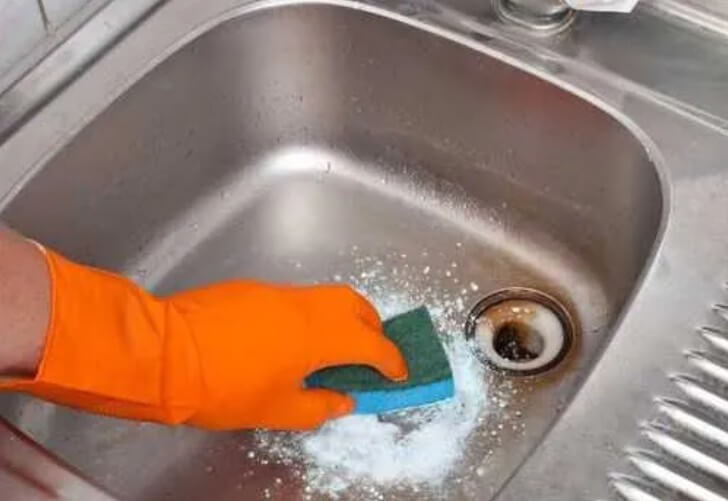
(2) Industrial environment
1) Choose the right stainless steel grade:
Choose a stainless steel material with stronger corrosion resistance according to the specific use environment, such as 316 stainless steel suitable for marine and chemical environments.
2) Electroplating or coating:
Electroplate a layer of metal such as nickel or chromium on the stainless steel surface, or apply a protective coating such as epoxy resin or polyurethane to effectively isolate the external corrosive medium.
3) Control environmental conditions:
Reduce contact with salt, acidic or alkaline substances, improve workshop ventilation, and reduce moisture accumulation.
4) Avoid contact with dissimilar metals:
Prevent stainless steel from direct contact with other metals and avoid electrochemical corrosion. Insulating gaskets and other measures can be used.
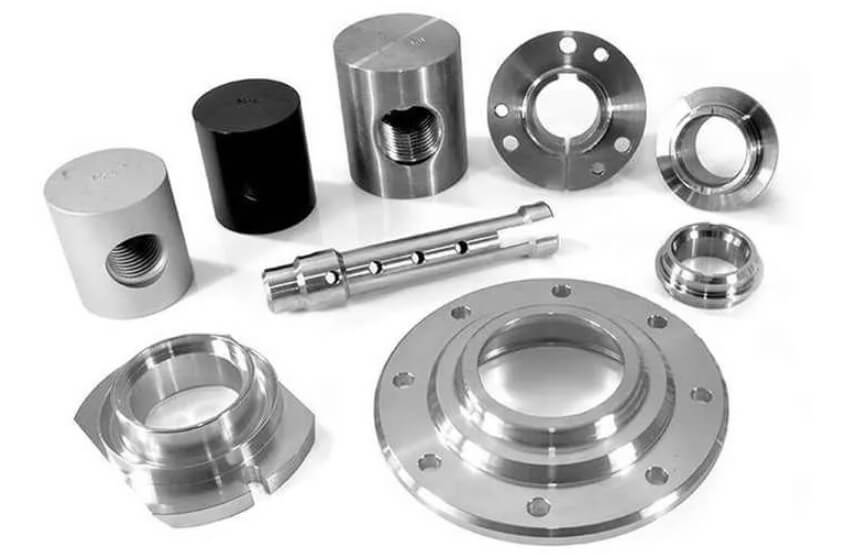
5) Use anti-corrosion agents:
In certain environments, anti-rust oil or antioxidants can be used to form a protective film on the surface of stainless steel to improve rust resistance.
6) Heat treatment:
Stainless steel is subjected to heat treatment such as solid solution treatment to improve its organizational structure and corrosion resistance.
7) Regular maintenance and inspection:
Perform regular inspection and cleaning of stainless steel equipment on a regular basis to promptly detect and deal with rust hazards.
7.Summary
I believe that after reading this article, you have fully understood how to remove rust from stainless steel. Removing rust does not require expensive professional tools and can be easily done using common items at home. By taking these simple steps, you can not only solve the current rust problem, but also learn how to prevent future rust and keep stainless steel items in the best condition.

